Interview: The Inland Sea
January 15, 2020 · 0 comments
By Jasper Sharp.
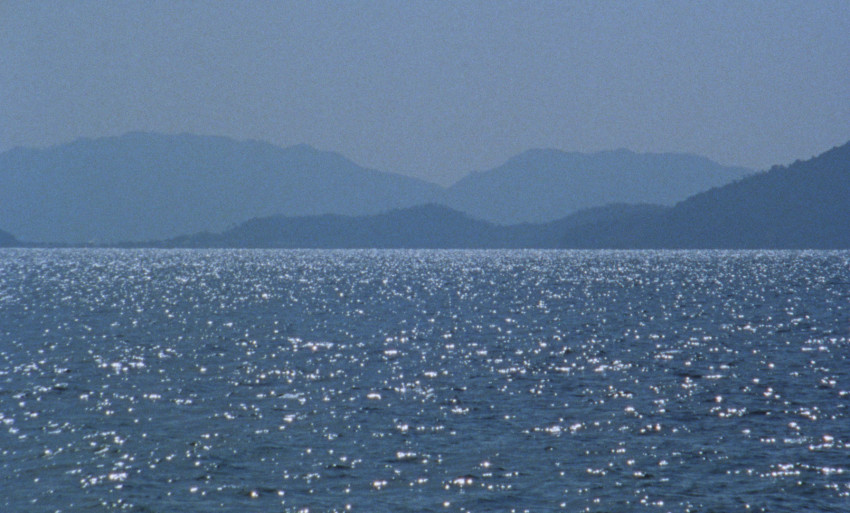 Almost fifty years ago, Donald Richie, the author and cultural critic who introduced Japanese cinema to the West, embarked on an epic odyssey of self-discovery amongst the island communities between Shikoku, Honshu and Kyushu, resulting in one of his most personal and highly-regarded books, The Inland Sea (1971). Two decades later, filmmaker Lucille Carra lyrically evoked the exterior and inner mental landscapes described by the author in the 1991 documentary of the same name.
Almost fifty years ago, Donald Richie, the author and cultural critic who introduced Japanese cinema to the West, embarked on an epic odyssey of self-discovery amongst the island communities between Shikoku, Honshu and Kyushu, resulting in one of his most personal and highly-regarded books, The Inland Sea (1971). Two decades later, filmmaker Lucille Carra lyrically evoked the exterior and inner mental landscapes described by the author in the 1991 documentary of the same name.
With a new 4K scan of The Inland Sea released on DVD and Blu-ray by Criterion, I caught up with Carra and cinematographer Hiro Narita, who oversaw the transfer, to pose such questions as to how the film project came about, how much have the area and its people – “the real Japanese people, the originals” according to Richie – really changed over the intervening decades, and where was the dividing line between the real Richie, the first-person persona he created in his writing, and his contribution the film.
How would you describe the relationship between the book and the film?
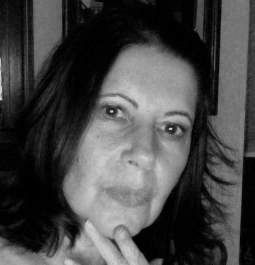 Lucille Carra: The book is open-ended, and one could make any number of versions. The film could be a fiction feature that features the character’s divorce vis-à-vis his escape into an old Japan; it could be a discovery of self in a more literal way. Maybe that version will happen one day in the future. I see the film as a record of the place that Donald visited thirty years prior to our visit as well as a meditation on the past.
Lucille Carra: The book is open-ended, and one could make any number of versions. The film could be a fiction feature that features the character’s divorce vis-à-vis his escape into an old Japan; it could be a discovery of self in a more literal way. Maybe that version will happen one day in the future. I see the film as a record of the place that Donald visited thirty years prior to our visit as well as a meditation on the past.
How familiar were you with Japan, Japanese culture and the Inland Sea area before you started work on the film? How familiar were you with Richie’s writing beforehand?
LC: I was very familiar with Japan, as I had been working at Toho for several years, from the time I was in graduate school. I worked for the New York office, but occasionally I would go to Tokyo. I was in charge of a library of 200 classic films for exhibition in the U.S. and Canada as well as new films that were having screenings in New York, like Ran and Merry Christmas, Mr. Lawrence. So, I met most of the famous directors of the 1980s and saw visiting theatre troupes, including bunraku and kabuki.
I was a real Japan enthusiast, read a lot of literature, and enjoyed analysing the “real Japanese,” as most Japanese and foreigners were doing at that time. Japan was the number one economic power in the world, and most magazines and news programs wanted to discover the secret to the success. One of my goals in the film was to go beyond the clichés – cherry blossoms, onsen, geisha, and get to meet everyday people. Donald Richie wrote a book called Different People (1988), portraits of both ordinary and famous film people. I wanted the film version of The Inland Sea to reflect some of the ordinary people Donald had met in that book.
Mr Narita, I understand you worked with Michelangelo Antonioni early on?
HN: I was fourteen when I left Japan, in 1957, and emigrated to the U.S. My limited experience was in Nara and Tokyo when the country was recovering from the war. I began my career as a graphic designer in San Francisco. This led to still photography, then eventually to cinematography. While I was apprenticing at a small film studio I was asked to do a screen test of an actor in whom Antonioni was interested for Zabriskie Point. He saw my footage and asked me if I’d like to be one of his camera operators for this film. Unfortunately, I was not in the Hollywood camera union and unable to get the job, but he contracted me to shoot student demonstrations and street riots as reference material. I shot on and off for nine months including the notorious Chicago Democratic Convention riots of 1968. Some of this footage actually ended up in the film!
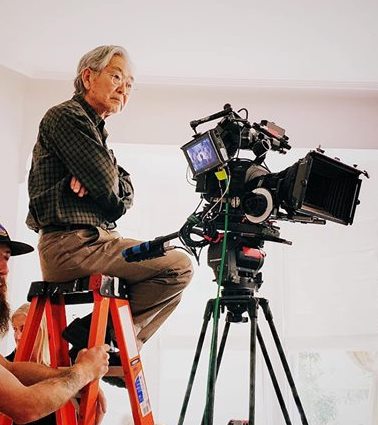 I continued my practice as a graphic designer for quite a while and, eventually, I was able to register as a cinematographer. Throughout my career I haven’t differentiated between documentary and narrative films. It is after all visual storytelling. Cinematography is a two-dimensional medium capturing and expressing a three-dimensional reality, not to mention complex emotions.
I continued my practice as a graphic designer for quite a while and, eventually, I was able to register as a cinematographer. Throughout my career I haven’t differentiated between documentary and narrative films. It is after all visual storytelling. Cinematography is a two-dimensional medium capturing and expressing a three-dimensional reality, not to mention complex emotions.
One of the earlier titles you shot was Martin Scorsese’s The Last Waltz (1978), the farewell concert documentary of The Band.
HN: The Last Waltz was a rare project. A cinematographer friend recommended me to Scorsese. I just happened to be at the right place at the right time. Sometimes you are offered a project you are not familiar with, but as a young cinematographer I welcomed the opportunity and the challenge.
As a side note, in 1996 I made a documentary about the American-Japanese sculptor, Isamu Noguchi: Stones & Paper. He died in 1988 and all his interviews were from the Noguchi Museum archive. Here was a maverick. In Tokyo, I interviewed a painter friend of Noguchi who reminisced that Noguchi was considered American when he was in Japan and that his eyes looked blue, but when he met Noguchi in the U.S., he was Japanese and his eyes looked grey. I sense some baffling similarity between Richie’s ability both to blend in and stand outside of the invisible borders and Noguchi’s identity with independence. I wonder if there is a certain freedom, if not a muse, in other people thinking of you as an outsider?
I knew of his work even as a kid in Japan and later I found his philosophy fascinating – that an object and a space have a concealed relationship and the artist’s role is to make it manifest. And a sculpture is not simply to be observed from one direction but experienced in a space; the observer and the observed establishing a unique personal connection. He was instrumental in promoting landscape art and garden as sculpture.
You worked on some very big films in the 1970s and into the 1990s. The Inland Sea was made between Honey, I Shrunk the Kids, Rocketeer and Star Trek VI. Can you tell me more about how different the experience on these was?
HN: I’ve been lucky to get involved in various genres and along the way and learned many tricks of the trade and new technologies. In our lifetimes we have already gone through major changes in technology and technique, such as black and white, colour negative and reversal, and to digital, not to mention from silent to sound. We should embrace these changes and make the best of it to tell stories.
My favourite film is Never Cry Wolf (1983), which required both narrative and documentary styles. It was also the most difficult project to pull off canvassing the vast northern tundra. It took ten months over two years to complete.
After ten years of retirement, I have just worked on Eleanor Coppola’s short film, Late Lunch – ten women in a room reminiscing about a lost friend. There is always a new challenge out there. Otherwise, I spend my hours in my workshop building cabinets.
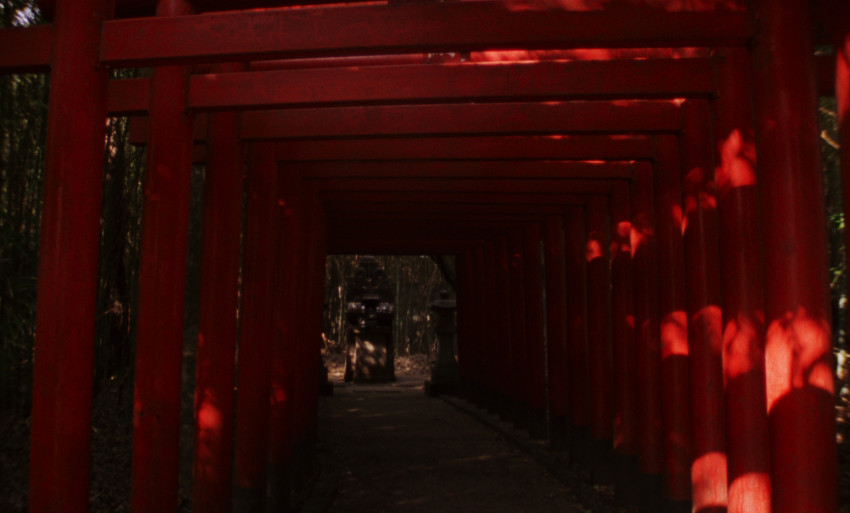 Where do you think the book of The Inland Sea sits within Donald Richie’s writing? What does the book mean to you and how did you encounter it?
Where do you think the book of The Inland Sea sits within Donald Richie’s writing? What does the book mean to you and how did you encounter it?
LC: The Inland Sea is different from Donald’s other books, because it reflected a personal journey, rather than an explanation of the Japanese for westerners. One usually goes to Donald Richie books like Tattoo, Japanese Gardens, The Japanese Film, and Kurosawa to learn information that was not readily available to us in the West. The Inland Sea, was like a continuation of Lafcadio Hearn’s Japan, An Attempt at Interpretation. Those are books by foreigners – expatriates – who choose to live in Japan. I related to The Inland Sea book because for many years, I also felt more comfortable there – as an outsider. It was my motivation to make a film that reflected that.
Donald Richie talks about book of The Inland Sea as a novel, that the first-person singular voice is a persona, quite distinct from himself. Did this have any bearing on the way you approached the film.
LC: That’s a very interesting question. My answer is no – I think the narrator is Donald; I didn’t see anything different between the man and the character. I just approached the character as Donald Richie, and I asked him to narrate the film. He read his words, and I let the chips fall where they may. When he appears walking in Ueno Park at the end, I think it’s a very familiar image of Donald to the people who knew him. The film has more of him than he realized.
HN: The Inland Sea is Richie’s observation and intimate experience, though filtered through the mastery of his storytelling. It is interesting to hear Richie say his first-person singular voice is a persona, quite different from himself. It made me ponder. In addition to Richie’s journals and Lucille’s interpretation of his perceptions I was interposing my own way of seeing the Inland Sea. At some moments I did find myself imagining Richie looking over my shoulder and peeking through the viewfinder. Was I somehow different from myself at that moment? In the similar vein of thought, when I pointed the camera and consciously framed an image in front of me, even in trying to guide the viewer in what to see, I imagined Richie’s vista, broad and loosely defined.
Carra had scouted the region over the previous year or so and had even picked some of the people to be included in the film when we got there with the film crew. She knew Richie’s journal inside and out and I think she was traveling through a parallel world to the one Richie experienced. I was responding to what she was describing to me, connecting to whatever unfolded in front of me on the locations.
I cannot deny that Kurosawa, Fellini, and Antonioni were lurking in my head and inspiring me wherever we travelled. For me there is no such thing as pure documentary. You are always looking out with one eye and looking in with the other at the same time – to paraphrase Antonioni – you are looking for the drama, the story, through images. I often remind myself of the phrase a Japanese filmmaker once told me; the beauty of things you don’t see, unseen images pregnant with drama.
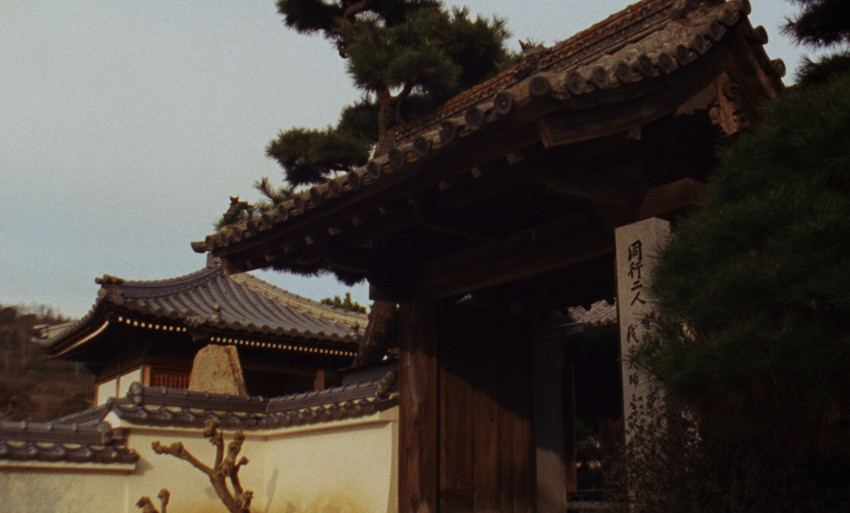 Did Richie accompany you on the shoot?
Did Richie accompany you on the shoot?
HN: I think we started the production with the Richie interview and with him reviewing the original journals in his apartment in Tokyo, but we never saw him again in the Inland Sea. I think he intended this to be so.
LC: He didn’t want to restrict us or say things like: “No, I wasn’t here; hang a left here.” He’s a filmmaker himself, and he didn’t want to smother us. I also think he didn’t want to be a character in it. This film is more poetic; it wasn’t a kitschy TV-type visit.
Donald was asked to work on a script, but he struggled with it, saying he hadn’t been back in thirty years and how could he do it? I have recently re-read his draft, and it reads something like Nabokov’s script of Lolita. It has tons of literary descriptions and portions of the book in narration form, without any cutting or condensing – more literature than film. He was a filmmaker, so I’m sure he could have done something with it himself. Because I went to the Inland Sea a couple of times while location scouting, I knew I needed to meet new people for the film and to keep the film alive and relatable. The people we met were very eager to speak about themselves, offering a lot of insights into their lives without any prodding from us.
I decided their narration, like Donald’s, would be in voice-over. I found the non-sync to liberate the cinematography and the editing, and to keep the film from being too “literal.” The non-sync approach created a dream-like mood, or the mood of a memory – which, thirty years later, it really is! I remember being influenced by Listen to Britain, which William K. Everson showed us in graduate school in his “History of British Cinema” class. Our editor, Brian Cotnoir, was also very interested in non-sync work.
Yes, this use of post-synced sound, where sound is used expressively without being directly connected to the image… Why did you decide to go for this more poetic, less realistic approach?
LC: I don’t make cinema-verité documentaries where I follow people around. I’m a trained researcher; I like to analyse and put my spin on history. I’ve done other historical documentaries, with interviews, and we go to voice-over and suddenly we are freed up to create our narrative. The non-sync approach can better create that feel. In the film, we tried to evoke Donald’s past (from thirty years prior to the film) through the present. It’s a dream-like state. I think the beautiful sound editing by Brian Cotnoir helped create this tension between past and present.
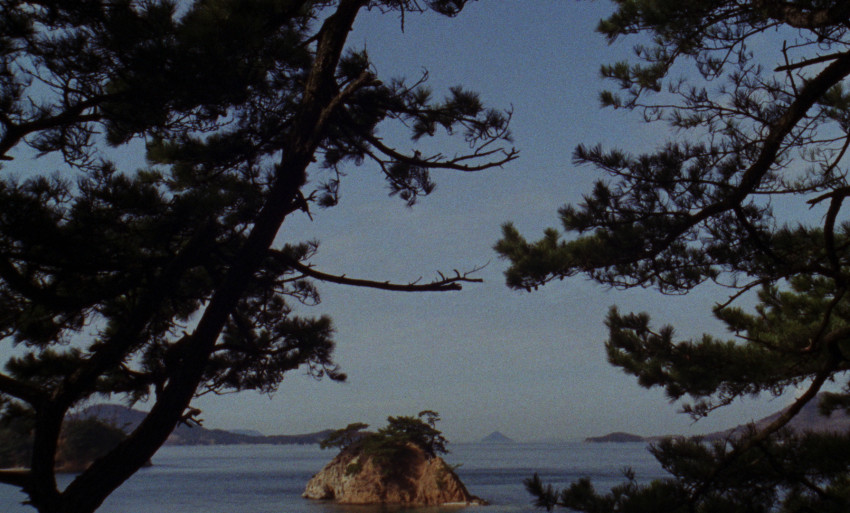 HN: I believe the excellent editing created visual and emotional rhythms that mirrored the journals.
HN: I believe the excellent editing created visual and emotional rhythms that mirrored the journals.
LC: When I worked with Hiro, I asked him to stop and shoot if anything was beautifully lit at the moment; there was a fair share of planned improvisation, if that makes sense. We shot on regular 16mm film with the intent to blow up to 35mm at 1:66, and Hiro would shoot, making the frame safe for 1:33 or 1:66. We all had a shooting script, so if we were in Kure for the day, we knew what Donald was saying in the script, and we’d shoot material that we would happen to find that would fit the narration. Working with someone at the level of Hiro, you let the cinematographer work creatively and freely. In addition to his lighting selections, Hiro is a master of camera movement. I knew I wanted to work with him when I saw his amazing nature work on Never Cry Wolf, (a film which needs a major restoration, by the way). And, in addition to camera movement, he is a master of framing. And in addition to framing, he is Japanese and has that certain “asymmetrical” aesthetic, as I call it. It fit the mood of the film perfectly. Also, he is the nicest person to work with, and genuinely interested in people and places.
What were your impressions of Donald Richie himself?
LC: Donald Richie was very comfortable as an expatriate in Japan and stated very clearly that he wanted to live there. He wasn’t happy living in New York and heading the Museum of Modern Art’s film department. He was a very brilliant writer and critic, and I think he is very underrated because his subject matter was Japan, which is still an esoteric subject. I also think that, living in Japan, he was content not to promote himself in the West. However, he could write and talk eloquently on Bresson, and others. I would love to have had his opinions on Western directors, for example. One impression that stays with me is that Donald was from the Midwest, and that formality and civility never leaves the person, no matter how worldly they become. I’ve worked with many people from the Midwest and there is a “niceness” – not that they are all really nice, like any other group, some individuals can be quite mean – but a veneer of courtesy is always there. Richie also served in World War II, and that has an effect on a person. He could be very avuncular with us and the crew, and liked to teach and inform.
Tell me about Toru Takemitsu and his involvement.
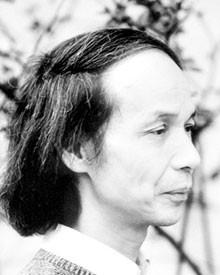 LC: Of course, I knew Takemitsu from all his Toho scores, and I would have never dreamed of contacting him for this film. However, he was a dear friend of Donald’s, and Donald felt a film of The Inland Sea would have a Takemitsu score, similar to the score he recorded for Masahiro Shinoda’s film, Ballad of Orin (Hanare Goze Orin, 1977). It was a privilege to have a Takemitsu score in the film (a combination of nine Eastern and Western instruments), and now we all have another Takemitsu score for posterity! And because Donald wanted this, it enhances his contribution to the vision of the film.
LC: Of course, I knew Takemitsu from all his Toho scores, and I would have never dreamed of contacting him for this film. However, he was a dear friend of Donald’s, and Donald felt a film of The Inland Sea would have a Takemitsu score, similar to the score he recorded for Masahiro Shinoda’s film, Ballad of Orin (Hanare Goze Orin, 1977). It was a privilege to have a Takemitsu score in the film (a combination of nine Eastern and Western instruments), and now we all have another Takemitsu score for posterity! And because Donald wanted this, it enhances his contribution to the vision of the film.
HN: Takemitsu’s contribution was fantastic. I was familiar with his work, and the sound/music he created for The Inland Sea was beautiful, a bridge between words and pictures. I met him briefly at a film festival where the film was being shown. I remember him vaguely saying that you did not need too much music in this film. He was astute and right. Later I found out that Takemitsu and Isamu Noguchi were good friends. And he said of Noguchi – I came upon this quote while directing Isamu Noguchi: Stones & Paper – that when Noguchi returned from travelling to exotic places and told me his experiences, it expanded “the geography of my mind”.
The cinematography is really quite stunning – and there are interesting touches like the way the opening scenes in Tokyo are in monochrome and burst into colour once we get to our main locations
LC: The opening in black and white and in Tokyo – I’m a real Tokyo fan; I’m sure in a past life I lived in Edo; I love Yurakucho and Ginza, so I wanted to start the film with my own Easter eggs of the Toho area. The ending returns to Tokyo, where we finally see Donald in his apartment and in Ueno Park. We used real black and white Tri X stock from Kodak.
Every few days, our editor/producer, Brian Cotnoir took the Shinkansen from the Inland Sea to Tokyo with our negative for processing.
HN: The use of monochrome for the present and colour for the past was Lucille’s idea. I liked the concept and it worked well for the film. We used an Aaton 16mm camera and Kodak high-speed colour negative and Tri X. We had only two zoom lenses: a 10-150mm Zeiss and a 9.7-97mm Angeniux for sheer convenience. We carried just a few small lights.
How long did the film take to make?
LC: From the first letter to Donald, requesting the option on the book, to completion, it took only three years. We went to the Inland Sea for research twice for pre-production and research, which contributed to the script development.
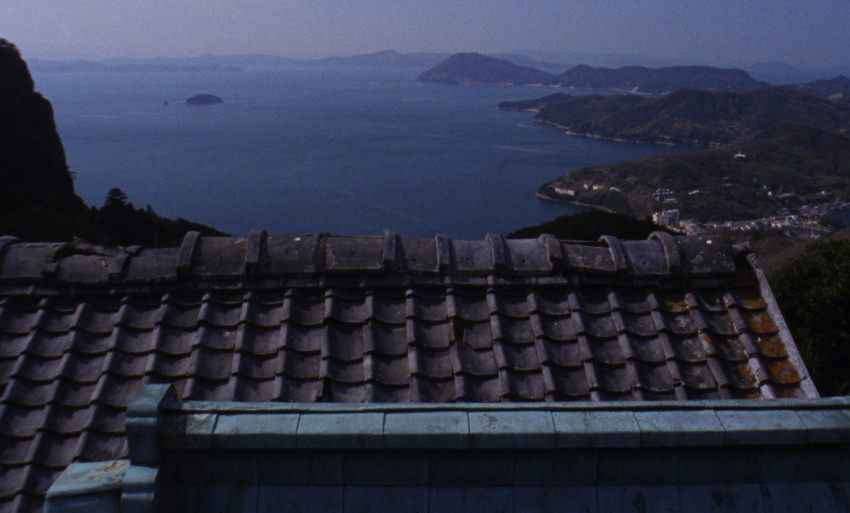 Do you have any particularly memorable incidents or encounters when making the film?
Do you have any particularly memorable incidents or encounters when making the film?
LC: There were many memorable encounters that appear in the film. I was always surprised that random people would want to be interviewed and told us intimate details, like the noodle shop proprietor who did calligraphy, or the young Nori fisherman, or the newspaper delivery lady. They were truly people you meet while traveling. We were introduced to the wonderful monk whose shrine had to be rebuilt after thirty years. I was so interested in preservation and architecture, but he just wanted to talk about Frank Sinatra!
HN: I felt the people were much more open and less self-conscious than those in the cities. The camera and the crew seemed almost invisible to them, in spite of there being some non-Japanese members with us. That’s how we managed to get shots in a café or in a park, for instance. Richie comparing them to the Mediterranean people is very apropos.
The sequence on the leper island is really memorable. Can you remember anything about shooting this?
LC: In the book, the Leper Island jumps out at you. In researching the film, it was important to at least try to locate it, which was not easy. Here is a place that was not on any map; Donald thought it probably didn’t exist anymore, and he had problem with the Japanese edition, because the publishers cut the portion out without telling Donald. He thought we would have problems with the film’s Japanese distribution if we found the place and included it. I am still haunted by the place, and I know crew members think about it a lot, too. There were children who lived there, who did not have the disease, but were related to those who had. It was very haunting when the gentleman said in our interview “we see the lights of Takamatsu at night,” when in our previous scene, we spent some relaxed time in that genial city, which is very close to the Leper Island by ferry. By the way, we never got distribution in Japan! One distributor returned our tape to us and said: “Your film is too dirty.”
HN: We had a permit to film on the Leper Island but we had to refrain from photographing faces or gruesome details. We got many shots clandestinely anyway. At the time I did not know such an island actually existed!
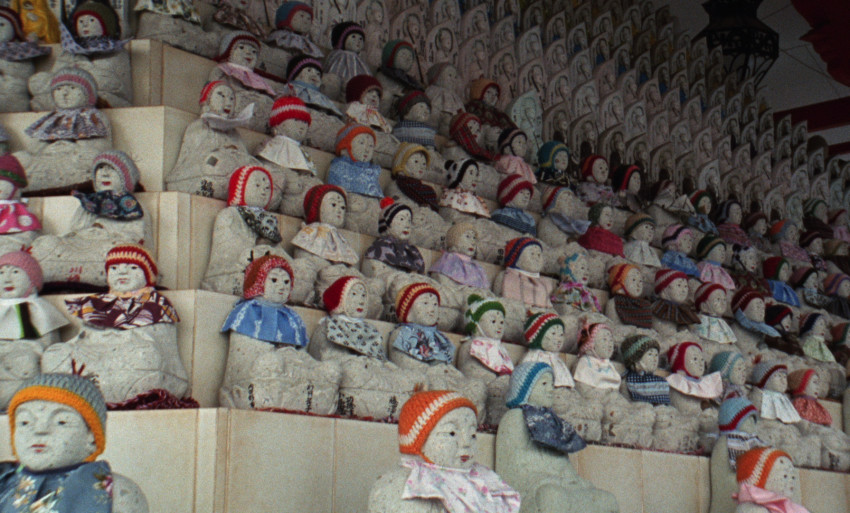 What market was the film originally made for? Presumably not for cinema audiences due to the running time. Do you know if and how the film was shown in Japan?
What market was the film originally made for? Presumably not for cinema audiences due to the running time. Do you know if and how the film was shown in Japan?
LC: We made the film for film festivals (we were invited to about forty), and theatrical screenings. I also wanted to sell it to international television, which we were able to do. We have always had distribution from VHS, to Laserdisc, to DVD and now this Criterion Blu-ray edition. The film has never been shown in Japan. In the 1990s, you could really sell your own film, visit film markets and get to know the sales agents. It’s not fun anymore. The streaming business is all very secretive.
Can you tell me a bit about this new restoration?
LC: The Inland Sea has always been in distribution – Ronin Film in Australia always had it. When Donald died, we all thought it was a good idea to remaster the film. Brian and I (and Hiro) meticulously preserved all the materials, including the interpositive that was struck for the 35mm print. Criterion, working with Metropolitan Post, did the frame-by-frame. The quality of Hiro’s work is so pristine, that the results bring out all the information he recorded. We still have all the original audio, the notes, and other materials. I want to donate everything to an archive. (I have been speaking with the British Museum about archiving the sound – but I need to reconnect with them).
I found it interesting you invoked the issues of global warming and environmental destruction in your interview on the Criterion disk. How much had the location has changed since Richie wrote the books? Have you been back since you made the film?
LC: When we were making the film, we were very aware of global destruction; Donald talks about this in the book, which is included in the narration. With my background in film history, I’m acutely aware of filming locations that might soon disappear. I have just returned from Tokyo a couple of weeks ago, and I’m surprised that so much is the same. I stayed in Kanda, which is a local district; my stores and restaurants are still there. Is Japan “pure”, or is it stagnant? I find a few more foreigners, but it’s not unpleasant.
HN: I know it had changed and become less xenophobic since the original book, seeing people from other Asian countries working in markets or construction sites (although they weren’t filmed). The Seto Bridge enabled an influx of people and the latest goods along with urban attitudes. But the core of the culture was still intact, I thought. You could still see things built several hundred years ago, and traditions and rituals from long lost past are still uncompromisingly in practice. Pachinko parlours and temples can exist in close proximity. Couples get married in both Shinto and Christian ceremonies, etc. Richie said somewhere Japanese are pragmatic and sticklers for compartmentalization. That sentiment seems contradictory, but it was alive and vigorous in the Inland Sea.
LC: I think when we shot the film, Japan was the number one economic power in the world and Donald was worried modernization would overtake it. Today, after Fukushima, I find Donald has nothing to worry about. Japan has seemed to return to “itself.” I haven’t been back to the Inland Sea. I hope to return soon. There will always be the lure of finding the Lost Japan, but as Donald says, it’s always around us.
Jasper Sharp is the author of The Historical Dictionary of Japanese Cinema. The Inland Sea is available on Criterion Blu-ray.
cinema, Donald Richie, Hiro Narita, Inland Sea, Japan, Jasper Sharp, Lucille Carra, Toru Takemitsu
Leave a Reply